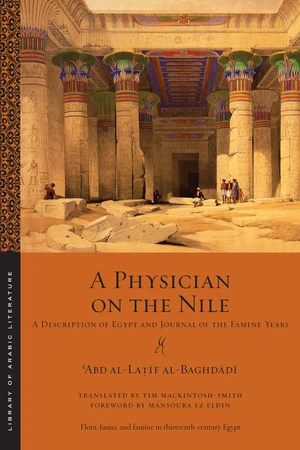Flora, fauna, and famine in thirteenth-century Egypt A Physician on the Nile begins as a description of everyday life in Egypt at the turn of the seventh/thirteenth century, before becoming a harrowing account of famine and pestilence. Written by the polymath and physician Ê¿Abd al-Laá¹Ä«f al-BaghdÄdÄ«, and intended for the Abbasid caliph al-NÄá¹£ir, the first part of the book offers detailed descriptions of Egyptâs geography, plants, animals, and local cuisine, including a recipe for a giant picnic pie made with three entire roast lambs and dozens of chickens. Ê¿Abd al-Laá¹Ä«fâs text is also a pioneering work of ancient Egyptology, with detailed observations of Pharaonic monuments, sculptures, and mummies. An early and ardent champion of archaeological conservation, Ê¿Abd al-Laá¹Ä«f condemns the vandalism wrought by tomb-robbers and notes with distaste that Egyptian grocers price their goods with labels written on recycled mummy-wrappings. The bookâs second half relates his horrific eyewitness account of the great famine that afflicted Egypt in the years 597â598/1200â1202. Ê¿Abd al-Laá¹Ä«f was a keen observer of humanity, and he offers vivid first-hand depictions of starvation, cannibalism, and a society in moral free-fall. A Physician on the Nile contains great diversity in a small compass, distinguished by the acute, humane, and ever-curious mind of its author. It is rare to be able to hear the voice of such a man responding so directly to novelty, beauty, and tragedy. An English-only edition.
Price history
Nov 2, 2022
€15.53

